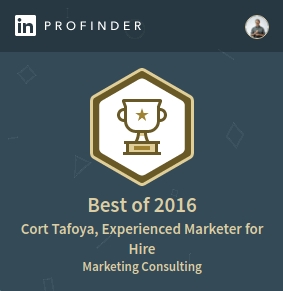There are many new websites and companies selling never before heard of products. These new products breed new keywords and search phrases. It is far from unreasonable for a startup to double their web traffic in a single month by simply adding a few search optimized web pages targeting these new search queries relevant to their business.
Download Google’s very own SEO starter guide for a thorough understanding of SEO best practices.
Do it yourself SEO
In the fastest way possible, let’s learn how to employ search engine optimization so we can not only create content that markets ourself, but lands on page one of Google for a phrase we think our customers are typing into search engines.
It starts with keyword research
You can dial up Google’s fancy keyword planner, but right now let’s just ask ourselves: What is my product or service called? What are the most common questions people have about my products or services? What are common phrases I and people around my office use when they talk about these products or services?
Write all of this down – now you have a keyword list.
Add to this list using a simple keyword targeting hack. Take your product name and incorporate the most popular cross industry modifiers like so:
- best (product/service name)
- (product/service name) in (your city)
- (product/service name) reviews
- (product/service name) costs
- (product/service name) for sale
- (produce/service name) companies
- how (product/service name) works
Take each phrase from your keyword list and put it into Google. Scroll all the way down and Google will provide you a list of related terms and phrases. This is super helpful! You now have very specific, common queries your customer base is using on Google. See an example below. I originally typed in “send to dropbox” and got all of these related results that I can target with new blog posts.
Writing: the hard part
Let’s say you license out an e-commerce platform. You can make a search optimized web page titled “How E-Commerce Platforms Work.”
You are an expert on how e-commerce platforms work. It’s your product after all. You should be able to write 500-800 words about each feature, each nuance, instructions, user advice etc.
500-800 words is ideal (not required), and the text should (ideally) be coupled with photos and video and other unique content.
Steps to search optimize this web page
Place a unique keyword phrase from your keyword list in the following places on your new web page/blog post. (I recommend starting with webpages – here’s why):
- Title
- Header
- First paragraph
- URL
- Meta description
- Linked text – the words “How e-commerce platforms work” linked to an FAQ page, or other page that describes the product. (This is a huge factor – link keywords throughout your site.)
- Keyword in the image file name
- Keyword in the image alt text
- Strong word count – shoot for a minimum of 500
It should go without saying that the content should be high quality – ask yourself, would people want to share this on social media? Is it that informative, useful and relevant to the reader?
Recycle, rinse, repeat
To continue executing this do-it-yourself SEO game plan, keep an ongoing list of keyword phrases you think your customers are typing into Google. When you answer people’s questions over email, archive that text for a future blog post or webpage.
Share your content via email and social media, ask for comments and shares, and you’ve taken the first steps to gaining traction on search engines. The SEO Shrugged blog will provide more details about search optimization going forward, so def. subscribe.



4 comments on “DIY SEO”
[…] DIY SEO […]
[…] DIY SEO […]
[…] DIY SEO […]
[…] DIY SEO […]